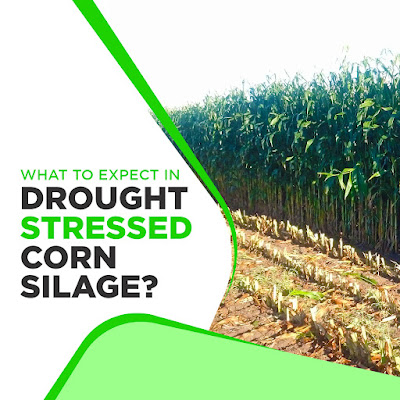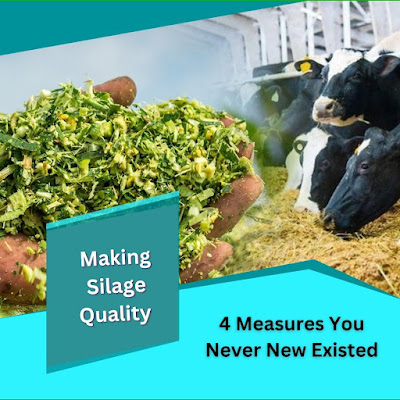What To Expect In Drought Stressed Corn Silage?
This year's
growing season has been quite different in many parts of the country. During
the drought season, crops we produce for cattle feed experienced mild to heavy
drought stress in many areas. In this post, we will gawk at strangers. At
Silage Agro, the best manufacturers of Silage Rajasthan, mean look at the
challenges you need to expect with drought-stressed corn silage and what you
should look out for.
What is drought?
A simple
definition of drought is a prolonged period without any rain. Your crops can
get varying degrees of drought stress, and its severity can cause a dramatic
commotion during dry and hot weather in a short time.
Some risks you should know about in
drought-stressed corn silage
Silage
Agro
believes that keeping these risks in mind and learning how to tackle such
threats can save you costs and time. If all this confuses you, contact us to
get an early supply of NutriMeal
Silage
for such conditions.
Nitrates: If you have harvested any crop during
drought, the chances are that it will contain high levels of toxic nitrates.
The rumen converts these nitrates to harmful nitrites. Nitrites combine with
hemoglobin and form methemoglobin, which cannot carry oxygen, making it hard
for your cattle to breathe. If you have nitrogen-fertilized your field or
experienced heavy manure, your crops can likely get nitrates.
If you
expose your drought-stressed silage to rain recently, nitrate-level may
increase. So you should wait 13-14 days after rainfall to be on the safe side.
If you put
your nitrate-infected silage in silos for at least 21 days before feed-out, it
will reduce the levels of nitrates.
Nitrates
are high in the lower part of the crop. So chopping at high levels will reduce
the nitrate content. You will have less yield, but something is better than
nothing.
You should
chop and test the crop if you suspect it was nitrated.
You should
move the cutter bar higher to leave more of the nitrate in the field.
You should
test silage for nitrates.
High-nitrate
silages can produce harmful silo gas, so you should be careful around bunkers.
Stay safe by wearing a mask.
Molds & mycotoxins: Aspergillus creates
aflatoxin, which can grow and multiply in hot and dry weather conditions that
come in drought. On the other hand, Fusarium ear rot makes the fumonisin
mycotoxins familiar in various weather conditions, but high temperatures and
drought stress before and after silking are suitable. In addition, you should
watch for other mycotoxins such as DON, T-2 toxin, zearalenone, and fumonisins.
● Aflatoxins harm your
cattle by causing feed deficiency and reproduction issues and can also affect
the digestive system.
● Aflatoxins are also
poisonous for us and our cattle. As per standards, the aflatoxins in milk
should be under 0.50 ppb.
● You should consider an
analysis of mold and mycotoxins before feed-out.
Dairy ration considerations with
drought-stressed corn silage
You should
consider these changes in ratio with drought-stressed silage.
● The rations can have
higher fiber levels.
● Fiber digestibility
might be higher and can trigger higher feeding rates to compensate for
shortages.
● Higher sugar levels are
needed to compensate for a percentage of the extra starch supplements.
● Drought-stressed corn
silage is low on energy.
● Corn silage with little
or no starch works best.
● Higher crude protein
levels will be there.
● Low starch, high sugar
silage will be suitable.
● Calcium and potassium
levels can increase.
● You should also get a
lab test of the silage before feeding.
Drought-stressed corn silage harvest situations
You should
consider these things for harvesting drought-stressed silage.
● The harvest moisture
should be about 62-68%.
● Use an inoculant or
bulletproof forage treatment for fermentation.
● Do not green chop and
quickly feed drought-stressed silage.




Comments
Post a Comment